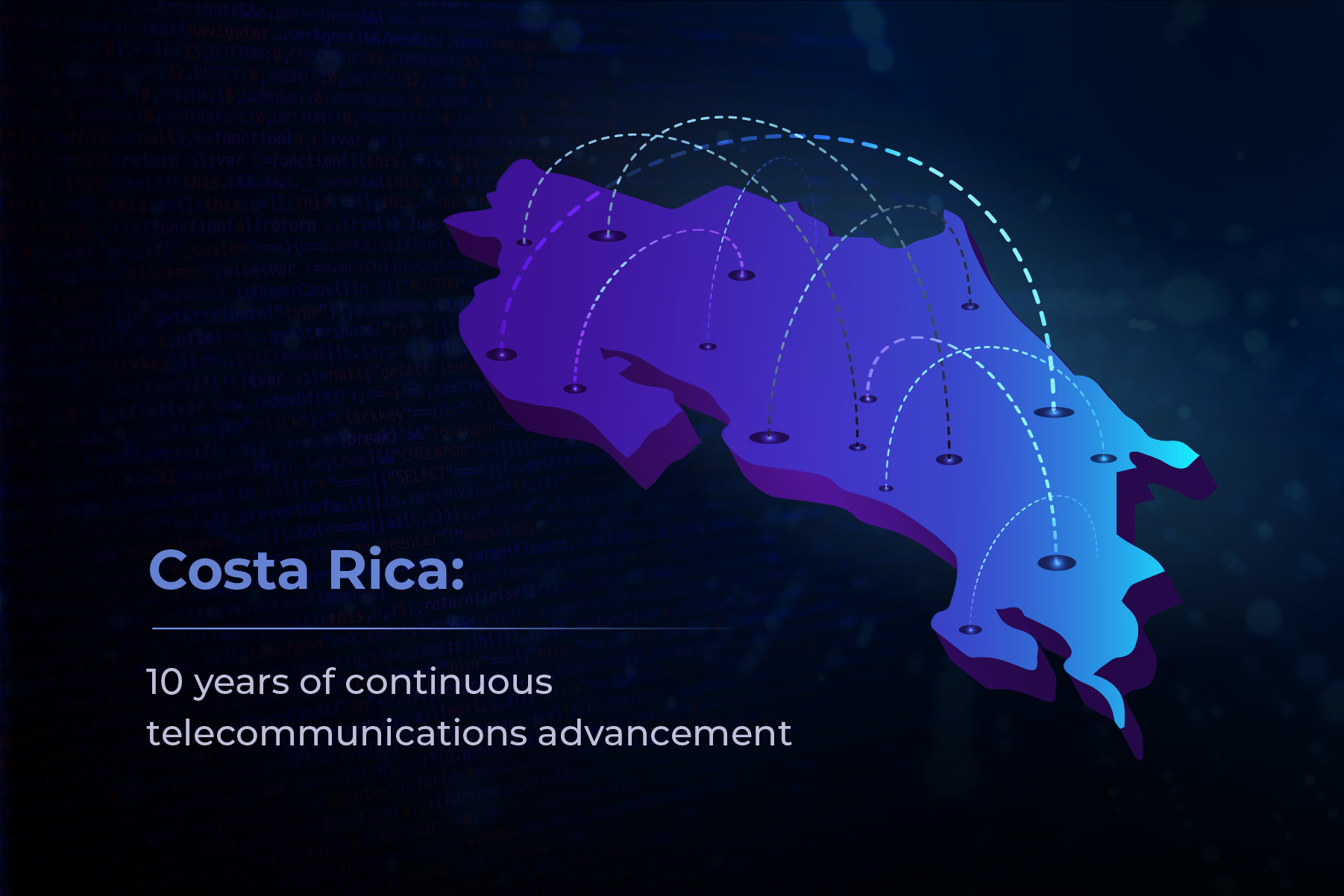
Costa Rica: 10 years of continuous telecommunications advancement
In today’s post, we speak to Hannia Vega, Telecommunications Superintendent at SUTEL (Costa Rica) about the sector’s achievements, challenges and opportunities for improvement in the Central American country.
Costa Rica’s achievements
Over the last decade, Costa Rica has reached important milestones in the field of telecommunications. Firstly, the market opening process enabled an increase in the number of operators, from 2 to more than 130. These operators compete with each other and offer users a wide range of possibilities. Secondly, we had two calls for tender in the radio spectrum. This streamlined competition and improved the quality of mobile services. Finally, we are preparing for a third tender that will allow for the advent of new technologies. This, together with other regulatory provisions, resulted in the declaration of an effective competition in 16 relevant markets several years ago.
Furthermore, in 2019, Costa Rica signed a Strengthening of Competition Authorities Law. This law provides SUTEL, the authority responsible for competition, with a series of legal tools boosting telecommunications’ growth and development. By December 2020, Costa Rica had invested 179 million USD in four Universal Access and Service programs comprising more than 28 projects. These projects made it possible to:
- provide Internet access to almost one million people in rural or remote areas;
- provide connectivity to 1 446 public service institutions;
- deliver 36 831 computers, with another 86 812 being purchased;
- improve the services public institutions provide to the population.
The Ministry of Education will give the additional computers to students. The government has also set up 513 public spaces, such as parks and squares, with free Wi-Fi Internet access. Furthermore, 148 426 low-income families received a computer and Internet access, which had a positive impact on 244 313 school-age children. The goal is to cover a total of 246 000 households and reach 400 000 student children by the end of 2021.
Important challenges to face
The main challenges for the country are undoubtedly to promote:
- long-term sustainability for all of these projects,
- access to new technologies, such as 5G networks and
- flexibility in the regulatory landscape, to allow telecom and technological companies to test new business models that benefit consumers. This model is known as a “Regulatory Sandbox”, and would impact the use and advantages of ICTs.
The success of a country’s digitization depends to a large extent on the national public policies and on the leaders’ vision. Seventy-two years ago, the decision of abolishing the military enabled Costa Rica to invest in education and reach a significant level of development. Today, we should make the decision to invest in the digitization and development of digital tools that will allow the country to be competitive and to face new challenges.
This requires a national agenda of adequate public policies that promote both the use of technology and strategic alliances. This would allow technology developers, telecom companies and the public sector, among other members of the digital ecosystem, to converge. According to the 2020 Alliance for Accessible Internet (A4AI) report, Costa Rica occupies the third place in the world’s ranking of countries where the Internet is more accessible. It is only surpassed by Colombia and Malaysia. This highlights the scope of the efforts carried out in the last 10 years.
However, in order to improve the country’s competitiveness, it is essential to continue improving the access to services. Costa Rica also needs to promote strategic alliances and visionary long-term policies, as well as improve the timelines and processes of the Universal Access and Service’s projects. SUTEL is ready. We have a clear roadmap and are currently focused on strengthening the competition market. This will help ensure that the users receive high-quality, innovative products at competitive prices.
Vision for the future
In the next 5 years, I see Costa Rica on the path to ex-post regulation, opening the door to high technology investment opportunities. In this vision, a significant number of people are working from their homes, with better access to broadband. Moreover, the Costa Rican society is increasingly connected and immersed in the development of new technologies such as 5G and the Internet of Things.
This technological shift will enhance the digitization of public services and will streamline other industries. These will have to be prepared for the arrival of thousands of “digital nomads” who see in Costa Rica a medical, touristic and employment destination, among others.

Hannia Vega
Telecommunications Superintendent
Do you want to know more about the telecom sector in Latam? Click here.
